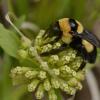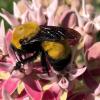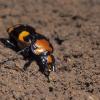
Activity Period and Flash Signal
This species has a generic flash pattern with males emitting emit bright, fast flashes every 2 seconds. Females respond with their own flashes. Unlike most firefly species, displaying males do not congregate together but instead scatter out across a large area. Because they often co-occur with other firefly species, this can make it difficult to distinguish them.
This species has a wide range but appears to have been extirpated from some areas. It has been reported from Alabama, Florida, Georgia, Mississippi, North Carolina, Ohio, and South Carolina, although it may be more widespread but overlooked. Populations in Florida may be extinct.
The pointy-lobed firefly is a habitat specialist found in bog and marsh habitats.
- IUCN Red List status: Endangered
- NatureServe status: G1—Critically Imperiled, SH—Possibly Extinct (Florida), SU—State Unrankable (Mississippi), SNR—State Not Ranked (North Carolina, Ohio, South Carolina)
- U.S. Endangered Species Act status: Not listed
Habitat loss and light pollution are the leading threats to this species.
- We need to know more about the distribution of this species. Please check out the Firefly Atlas to help us track and conserve this threatened firefly
- Turn off your outdoor lights at night so the lights of this firefly aren’t diminished by light pollution. You can read more about firefly-friendly lighting in our fact sheet.
- Avoid pesticide use, which could harm this firefly, its habitat, or its prey.
- If this firefly is found to be extant at historic sites, they should be protected.
- More research on population size and trend, habitats and ecology, and threats is needed for this species.
Candace Fallon, The Xerces Society for Invertebrate Conservation, based on the IUCN Red List assessment





